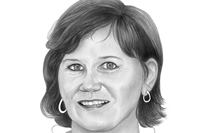Governing magazine profiled John Norquist while he was mayor of Milwaukee as one of its 1998 Public Officials of the Year. The publication described him, admiringly, as a “fiscally conservative socialist,” a responsible politician with a social conscience. Norquist championed public transportation, especially light rail, and re-established Milwaukee’s street grid, while he reduced property tax rates and kept all city budget increases at or below the rate of inflation. He won acclaim and criticism for his most contentious but ultimately successful act, tearing down the Park East Freeway, the largest thoroughfare ever purposely destroyed. In its place, Norquist’s storied planning director, Peter Park, drafted a form-based code that re-established the traditional form and character of the city center.
Since then, Norquist has led the Congress for the New Urbanism (CNU) as president and CEO. A strong partner with the U.S. Green Building Council, he was instrumental in developing the LEED-Neighborhood Design standards.
I caught up with Norquist during this year’s CNU conference in West Palm Beach, Fla. He was forthcoming and enthusiastic about our work at Vision 2020, acknowledging that we need interim goals and milestones to track progress toward the Architect 2030 Challenge goals. “Human settlement patterns have a huge impact on energy consumption,” he told me, “but when Ed Mazria started the Architect 2030 Challenge, he focused on buildings. Now we know it’s both buildings and the communities where they are located.”
Norquist believes that to achieve a carbon-neutral living environment we have to first reach a tipping point where people, politicians, and planners realize that how communities are developed makes a significant difference in the national energy profile. “And we will reach this tipping point within five years,” Norquist told me. “Young people already get it, and there’s a growing market for sustainable communities, but we have some significant obstacles that fortunately we will overcome.”
Norquist sees two significant obstacles, outdated finance and road building standards, that continue slowing progress toward sustainable development at a time when market and demographic trends are pushing us naturally toward more environmentally suitable living patterns. “Right now, zoning promotes segregated uses while the government-sponsored agencies that capitalize housing also exert financial restrictions on mixed-use development,” which most environmental thought leaders consider the cornerstone of sustainable development. The common interpretation of existing finance law limits the commercial area of a mixed-use project to 15%, but since this is an interpretation, and not an outright standard, Norquist believes the administration could tweak that percentage up to a still conservative 40% without rewriting the law.
“This limitation in financing has already cost us main street America,” claimed Norquist, referring to the traditional main street of retail stores with apartments on top. “You can’t get a loan for it anymore.” Meanwhile, just like many other American inventions, it thrives abroad. “You’ll see a new strip mall with a row or two of cheap apartments on top in Canada. That’s what you see in Europe, too. In the United States, you never see this, and this has to do with the feds’ restrictions.” There’s movement afoot to modify loan standards to encourage instead of discourage mixed use. The NAHB recently passed a resolution that argues the commercial area limits should be raised to at least 25%, but Norquist is not satisfied with this adjustment, “We say there should be no limits; urbanism should not be a risk factor.”
Norquist believes this first hurdle to the development of sustainable communities could be solved within the next five years. “It could be done by presidential fiat, and it could even be done by a Republican,” said Norquist, adding, “It’s good for the environment, but just because it’s good for the environment does not mean Republicans have to kill it. It’s good for business, too.”
The second hurdle is transportation, and it’s a little tougher because it requires congressional action. Traditionally, urban streets had three, broadly recognized purposes, including transportation, commerce, and culture. “Look at the Avenue des Champs-Élysées in Paris, it’s a really big road handling more than 75,000 cars a day, but it also has world-class retail, offices, cafés, and restaurants,” Norquist told me. He cited a book CNU recently published setting a new standard for multipurpose streets that accommodate more than just transportation, “Sustainable Network Principles."
The Department of Transportation (DOT) supported the concepts in this book. In fact, DOT has started to work in concert with HUD and the EPA to transit-oriented development. But individual states remain more conservative, said Norquist. “Now it’s up to state transportation departments and the American Association of State Highway and Transportation Officials to update their thinking. They remain single-mindedly focused on avoiding congestion, so they promote freeways where everybody can travel faster and farther, speeding off to increasingly less significant destinations.”
Like many other environmental concepts, the argument has already been won in Europe and Asia. “Even the Chinese, who used to listen to U.S. infrastructure experts, have now clearly moved away from the freeway free-for-all and hired sustainability consultants, such as Peter Calthorpe, to help them reduce their energy profile through reintegrating housing and commerce into attractive, well-connected, and more livable communities.”
Norquist holds a controversial concept of congestion, he likes it. “The objective is not to eliminate congestion; it’s to add value to where you’re building. Congestion is not bad. Cities need congestion; the most successful ones are also the most congested. Congestion is a symptom of success.”
I asked Norquist what he expected in positive light to occur over the next two decades. “By 2030, the United States will be very close to zero net emissions. The younger generation is much more open to dealing with these issues. The politics will change. Even Republican attitudes will evolve by virtue of the party getting younger and more diverse.”















